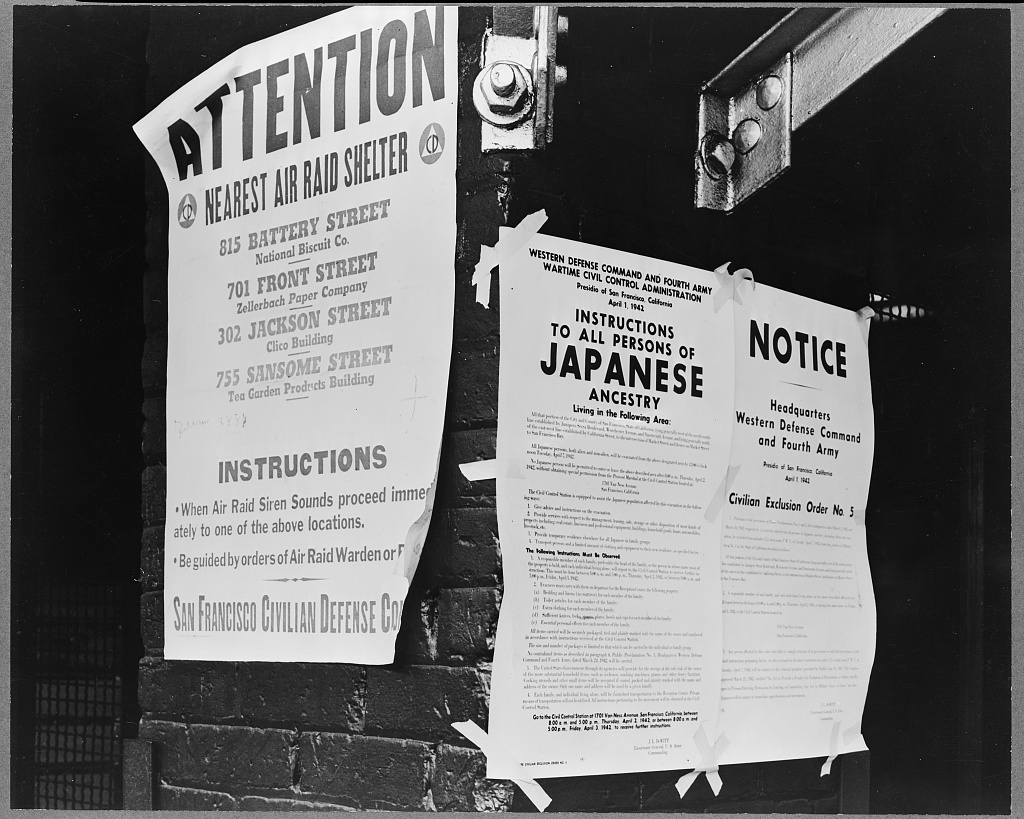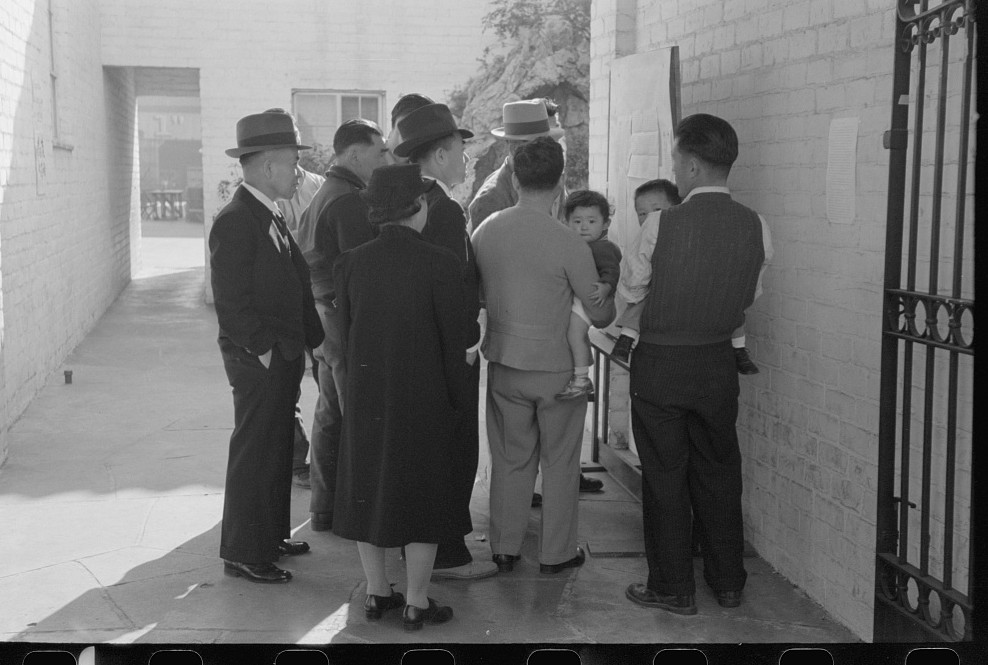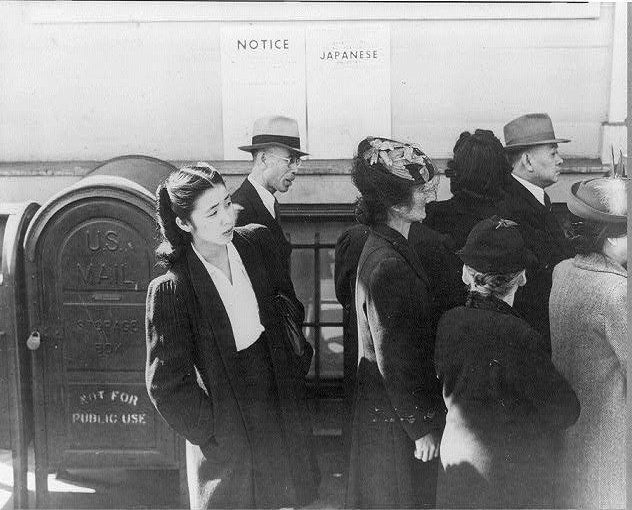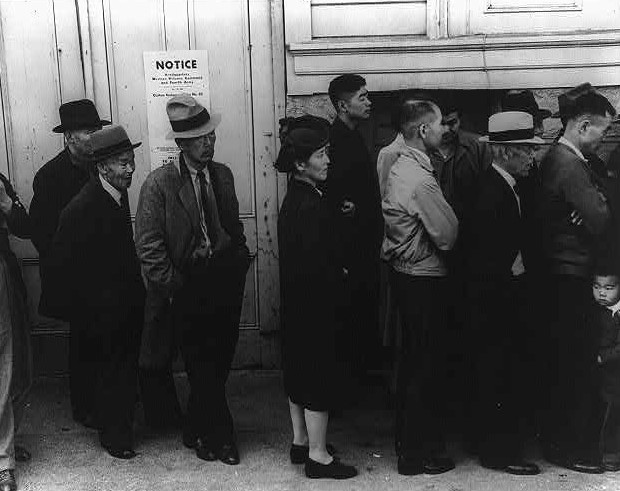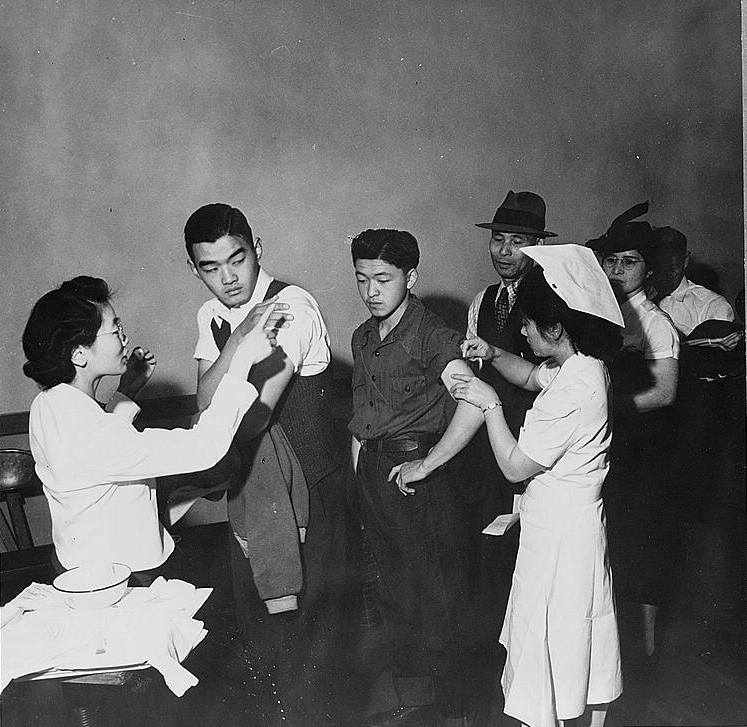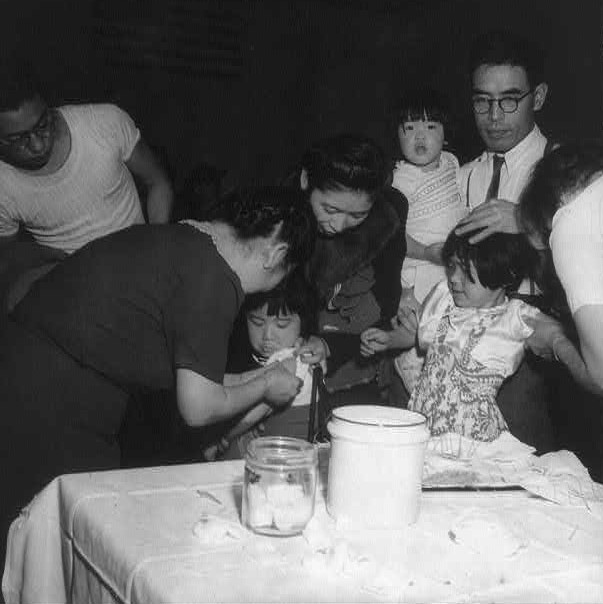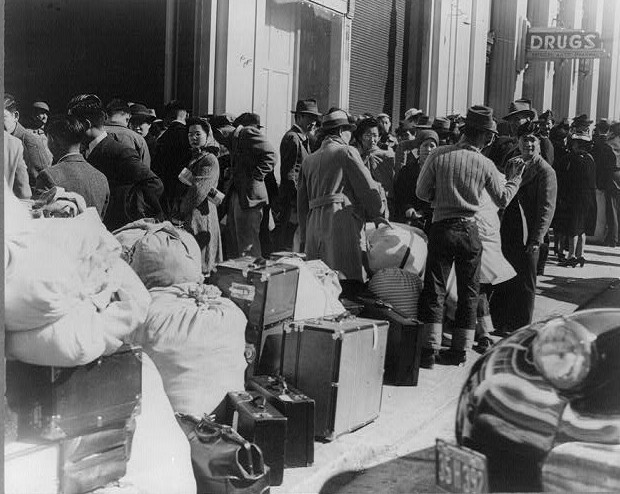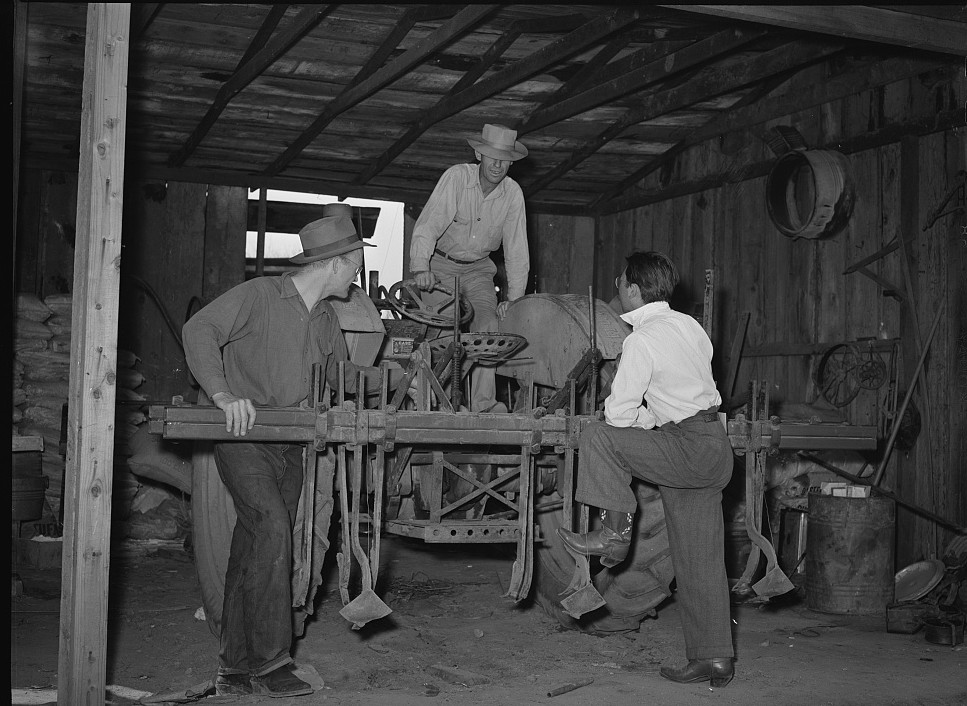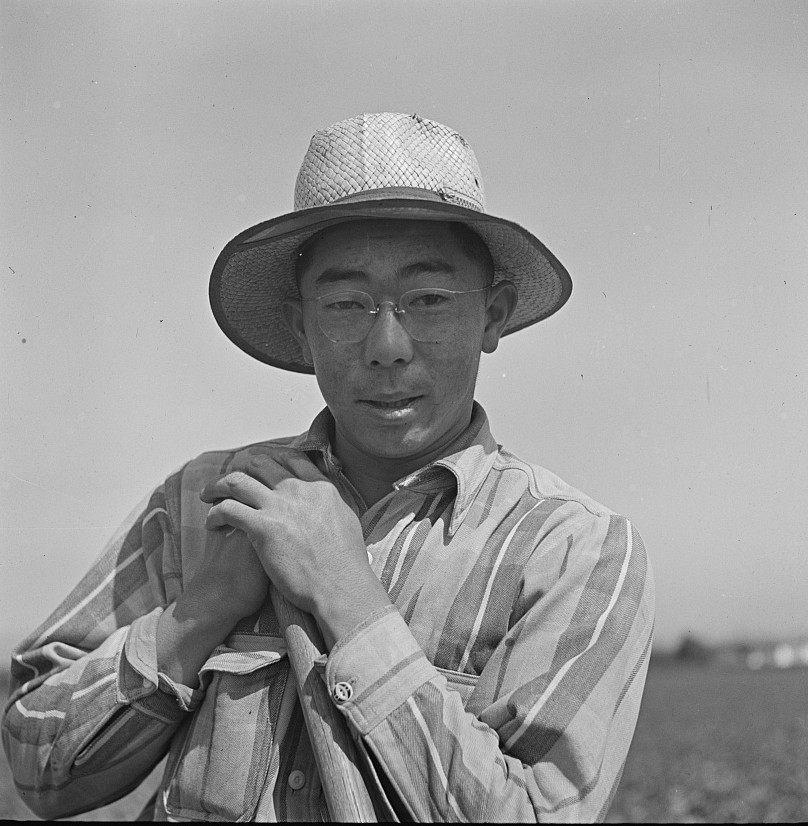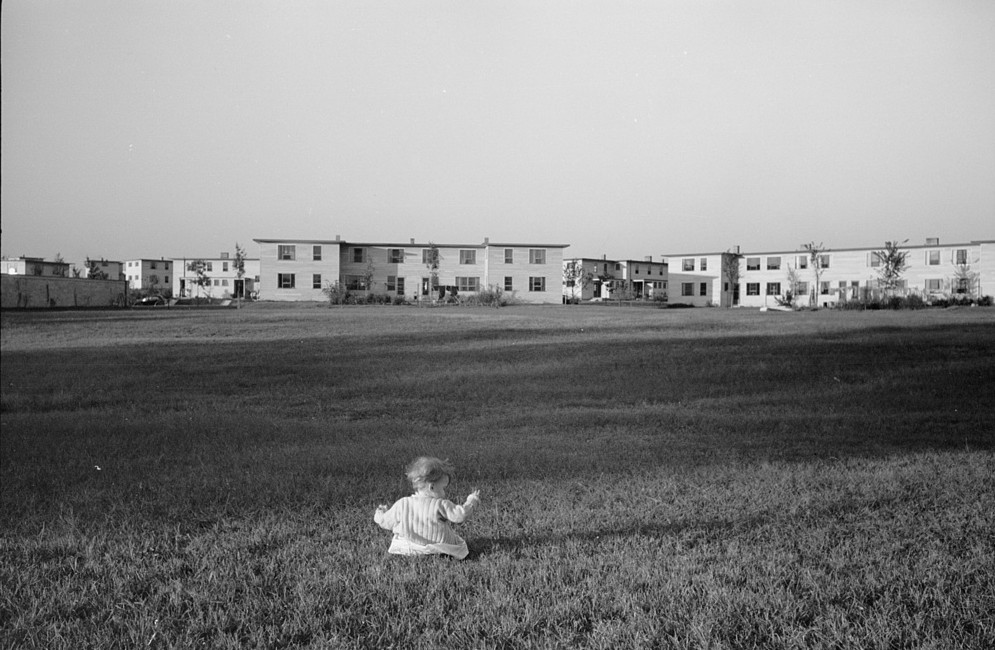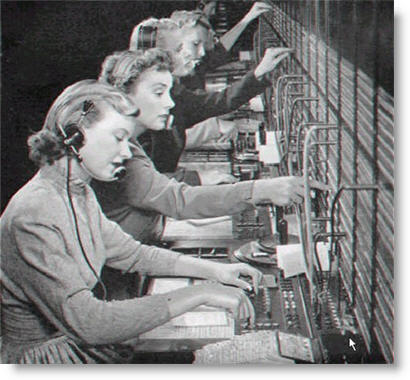Part I
Japanese Internment
The Evacuation
The attack on Pearl Harbor on December 7, 1941 led military and political leaders to suspect that Imperial Japan was preparing a full-scale attack on the West Coast of the United States. Of 127,000 Japanese Americans living in the continental United States at the time of the Pearl Harbor attack, 112,000 resided on the West Coast.
Oakland, Calif., Mar. 1942. A large sign reading “I am an American” placed in the window of a store, at 13th and Franklin streets, on December 8, the day after Pearl Harbor. The store was closed following orders to persons of Japanese descent to evacuate from certain West Coast areas. The owner, a University of California graduate, will be housed with hundreds of evacuees in War Relocation Authority centers for the duration of the war by Dorothea Lange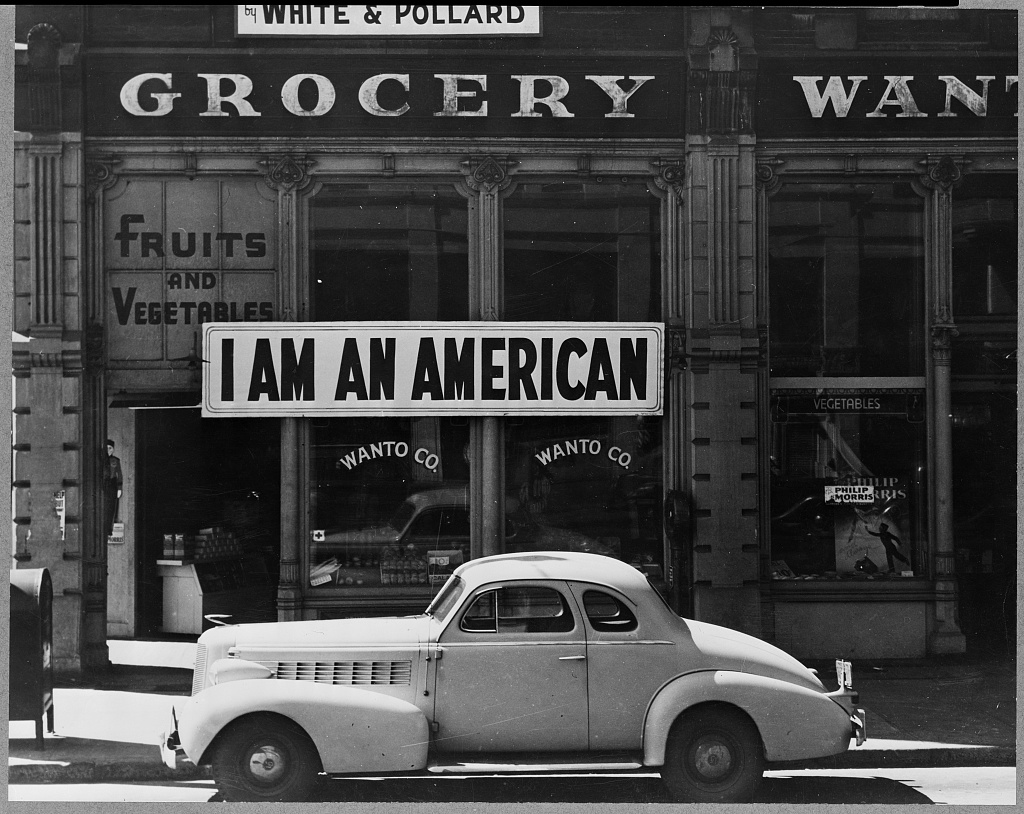
At first, American public opinion initially stood by the large population of Japanese-Americans living on the West Coast, with the Los Angeles Times characterizing them as “good Americans, born and educated as such.” Many Americans believed that their loyalty to the United States was unquestionable.
Mountain View, Calif., April 1942 – a grandmother and the youngest of 13 grandchildren photographed on a ranch in Santa Clara county before evacuees of Japanese ancestry were transferred to War Relocation Authority centers for the duration of the war 
However, six weeks after the attack, public opinion turned against Japanese Americans living in on the West Coast, as the press and other Americans became nervous about the potential for espionage.
Oakland, Calif., Feb. 1942 by Dorothea Lange
By February, Earl Warren, the Attorney General of California, had begun his efforts to persuade the federal government to remove all people of Japanese heritage from the West Coast.
Japanese-American standing beside flower bed in his greenhouse prior to evacuation to War Relocation Authority center for the duration of the war. By Dorothea Lange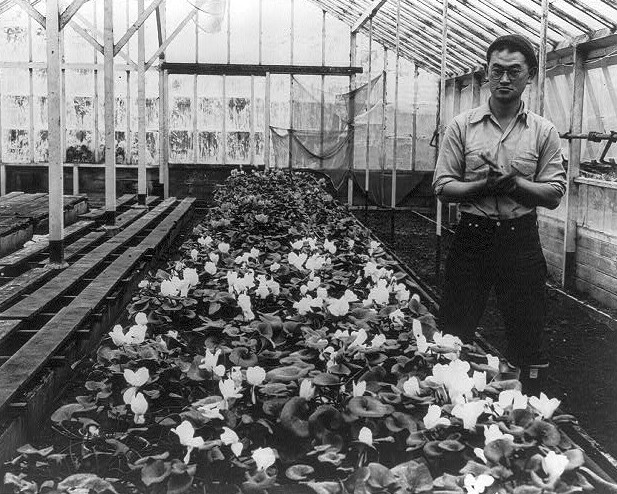
Centerville, California, April 1942 – a Japanese farmer harvesting cauliflower on a ranch near Centerville – he … will be housed in a war relocation authority center for the duration of the war by Dorothea Lange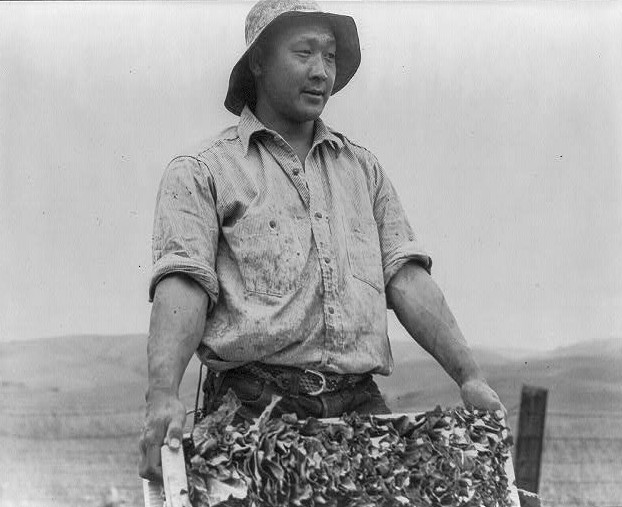
Civilian exclusion order #5, posted at First and Front streets, directing removal by April 7 of persons of Japanese ancestry, from the first San Francisco section to be affected by evacuation by Dorothea Lange
San Francisco, Calif., April 1942. First-graders, some of Japanese ancestry, at the Weill public school pledging allegience to the United States flag. The evacuees of Japanese ancestry will be housed in War relocation authority centers for the duration of the war by Dorothea Lange
San Francisco, Calif., April 1942 – Children of the Weill public school, from the so-called international settlement, shown in a flag pledge ceremony. Some of them are evacuees of Japanese ancestry who will be housed in War relocation authority centers for the duration
San Francisco, Calif., April 1942. A lunch hour scene at the Weill public school in the so-called international section. Many children of Japanese ancestry like the boy shown here with his Caucasian chum, were evacuated with their parents from this neighborhood, to go to the War relocation authority centers for the duration of the war
Los Angeles, California. Japanese-American evacuation from West Coast areas under U.S. Army war emergency order. Reading evacuation orders on bulletin board at Maryknoll mission by Russell Lee April 1942
Los Angeles, Calif., April 1942 – toys in store window 
This lady will be relocated April 1942 by Dorothea Lange
Shoppers reading US Army exclusion order No. 20 directing evacuation of persons of Japanese ancestry, San Francisco April 1942 by Dorothea Lange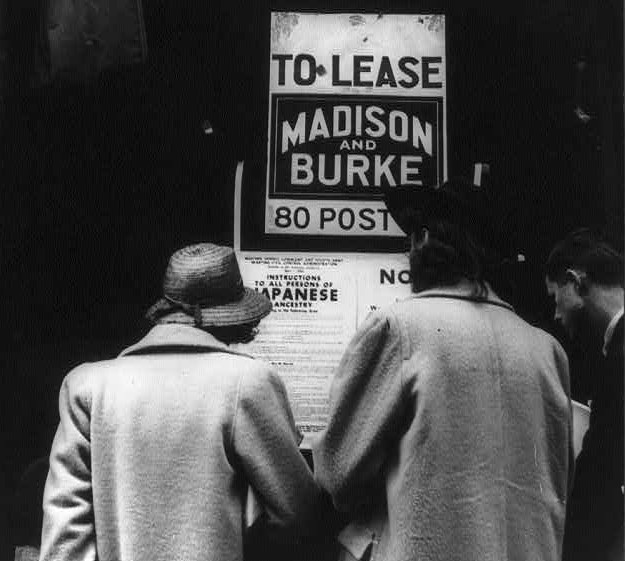
Los Angeles, Calif., April 1942 – A shop just before Japanese were evacuated from “Little Tokyo” 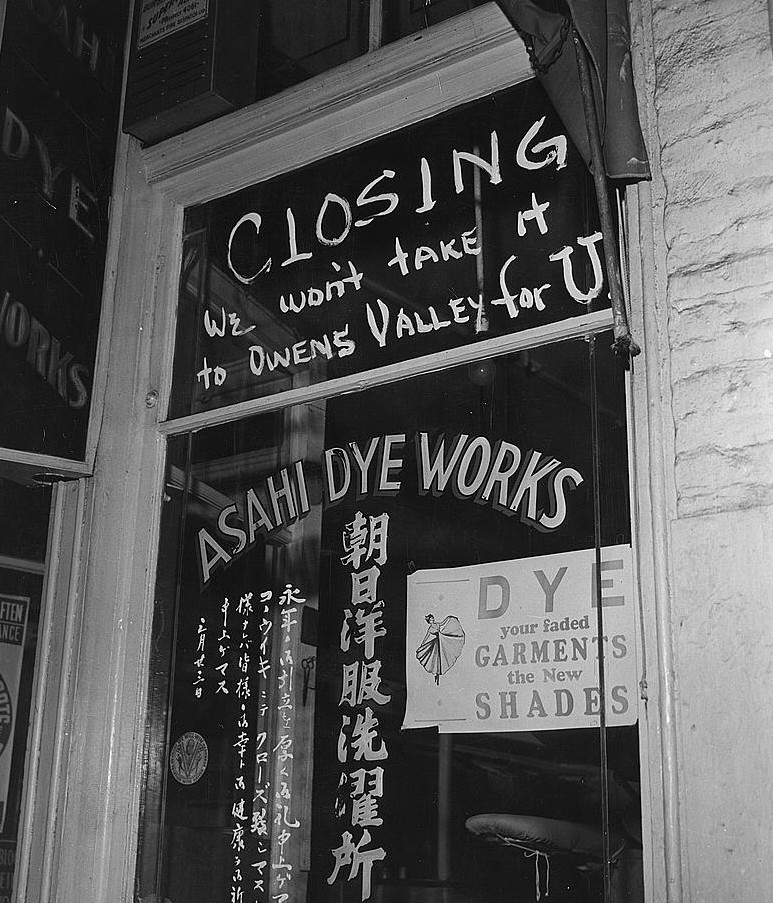
San Francisco, Calif., Apr. 1942 – residents of Japanese ancestry registering for evacuation and housing, later, in War relocation authority centers for duration of the war
Japanese residents at Civil Control station for registration, San Francisco April 1942 by Dorothea Lange
San Francisco, Calif., Apr. 1942 – residents of Japanese ancestry, in response to the US Army’s Exclusion order No. 20, appearing at the Civil control station and being registered for housing in War relocation authority centers for the duration of the war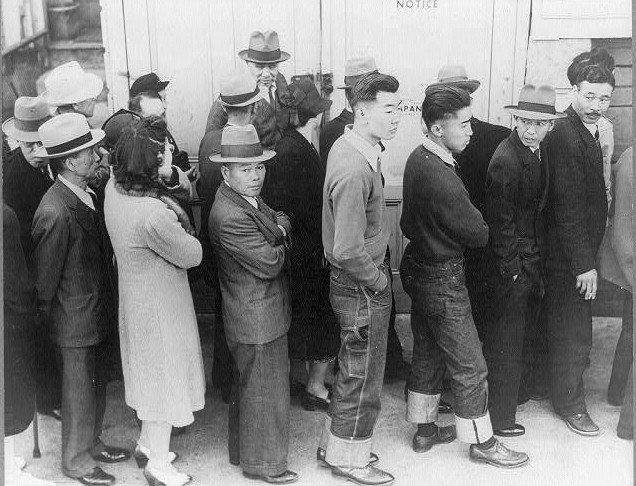
San Francisco, Calif., Apr. 1942–Residents, of Japanese ancestry, appearing at the Civil control station for registration in response to the Army’s exclusion order No. 20–The evacuees will be housed in War relocation authority centers for the duration
Residents of Japanese descent registering for evacuation at the Wartime Civil Control Administration station, San Francisco, April, 1942 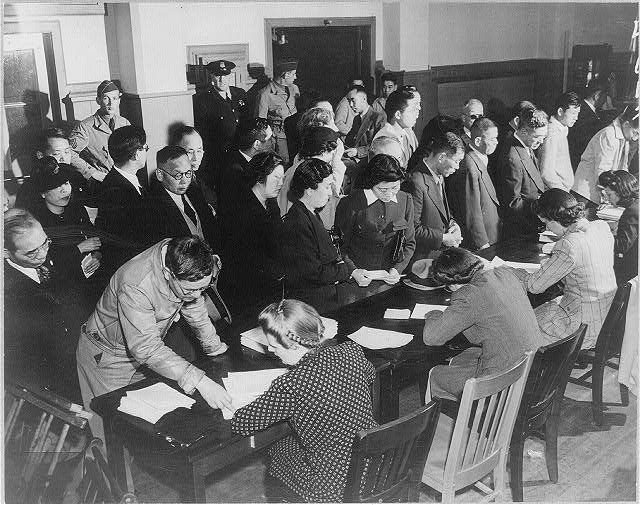
Japanese-American boarding up store front before evacuation, San Francisco April 1942 by Dorothea Lange
San Francisco, Calif., Apr. 1942 – evacuees of Japanese descent being inoculated as they registered for evacuation, and assignment, later, to war relocation authority centers for the duration of the war by Dorothea Lange
Oakland, Calif. Apr. 1942. Members of the Japanese Independent congregational church attending Easter services prior to evacuation of persons of Japanese ancestry from certain West Coast areas, and housing in War relocation authority centers for the duration of the war by Dorothea Lange
President Franklin D. Roosevelt authorized the internment with Executive Order 9066, issued February 19, 1942, which allowed local military commanders to designate “military areas” as “exclusion zones,” from which “any or all persons may be excluded.”
This power was used to declare that all people of Japanese ancestry were excluded from the entire Pacific coast, including all of California and much of Oregon, Washington and Arizona, except for those in internment camps.
Residents of Japanese ancestry awaiting the bus at the Wartime Civil Control station., San Francisco, Apr. 1942
The U.S. government ordered the internment of over 110,000 people of Japanese heritage who lived on the Pacific coast of the United States into “War Relocation Camps”. Sixty-two percent of the internees were American citizens. Those that were as little as 1/16 Japanese could be placed in internment camps.
Los Angeles, California. The evacuation of Japanese-Americans from West coast areas under United States Army war emergency order. Japanese receive travel permits for voluntary evacuation April 1942 by Russell Lee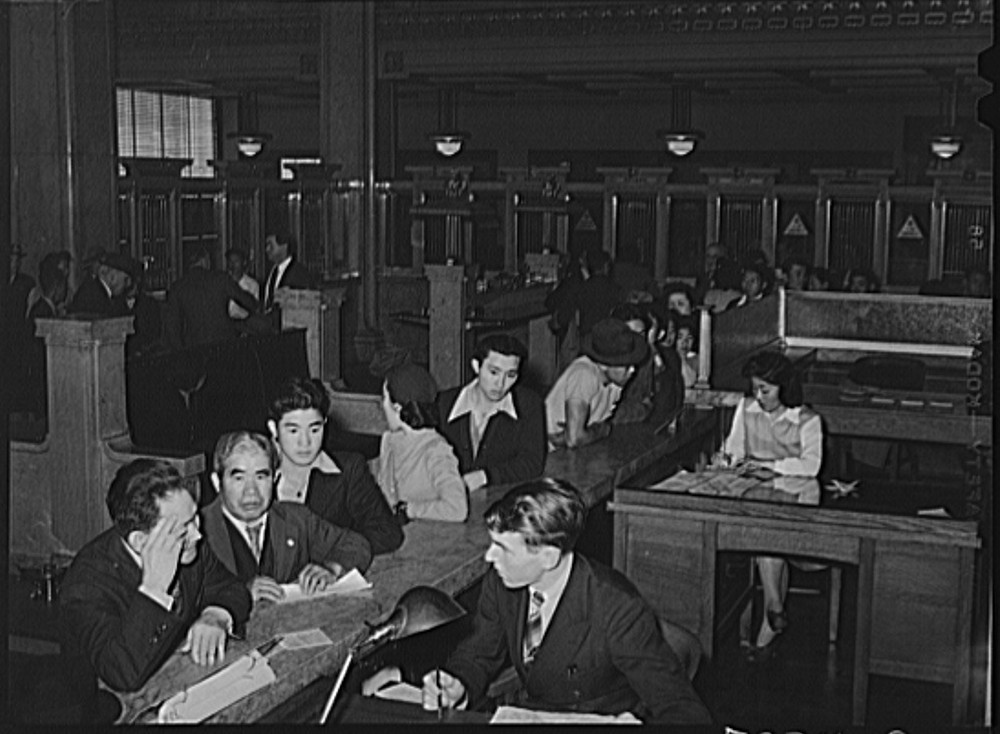
San Pedro, Calif. Apr. 1942–Residents of Japanese ancestry being moved from Los Angeles harbor before their eventual resettlement in war relocation authority centers 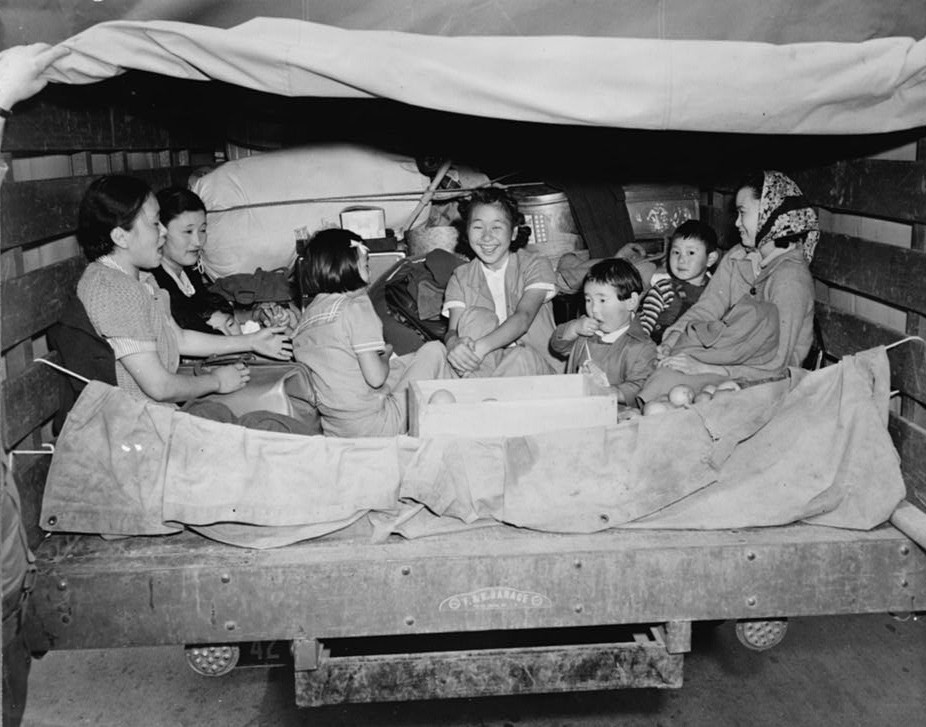
San Pedro, Calif. Apr. 1942. The last Redondo Beach residents of Japanese ancestry leaving by truck for relocation
Calif., San Pedro, Apr. 1942 – Evacuation of Japanese-Americans to relocation authority centers – part of fleet of fishing boats tied up at Terminal Island, owned by Japanese-Americans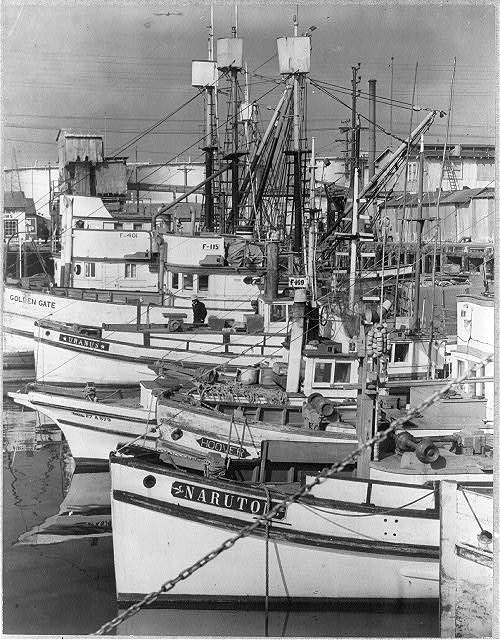
San Pedro, Cal. Apr. 1942. Fishing boats, formerly operated by residents of Japanese ancestry, tied up for the duration in Los Angeles harbor 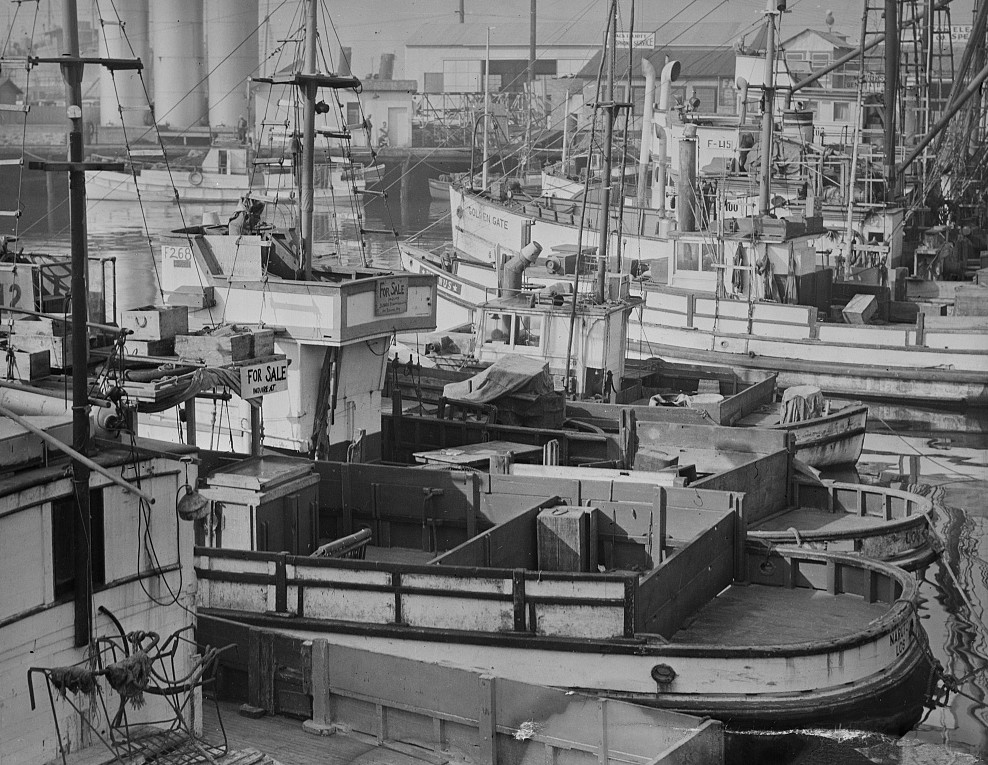
Manzanar, Calif., April 1942 – distributor of one of the 150 impounded automobiles owned by evacuees of Japanese ancestry assigned to the War Relocation Authority Center
Los Angeles County, California. The evacuation of Japanese and Japanese-Americans from West coast areas, under United States Army war emergency order. Farmer inspecting farm equipment which Japanese farmer wants to sell before he is evacuated Russell Lee April 1942
Los Angeles, California. The evacuation of Japanese-Americans from West coast areas under United States Army war emergency order. Japanese try to sell their belongings April 1942 by Russell Lee
Los Angeles, California. The evacuation of Japanese-Americans from West coast areas under United States Army war emergency orders. Sign on store owned by Japanese in Little Tokyo Russell Lee April 1942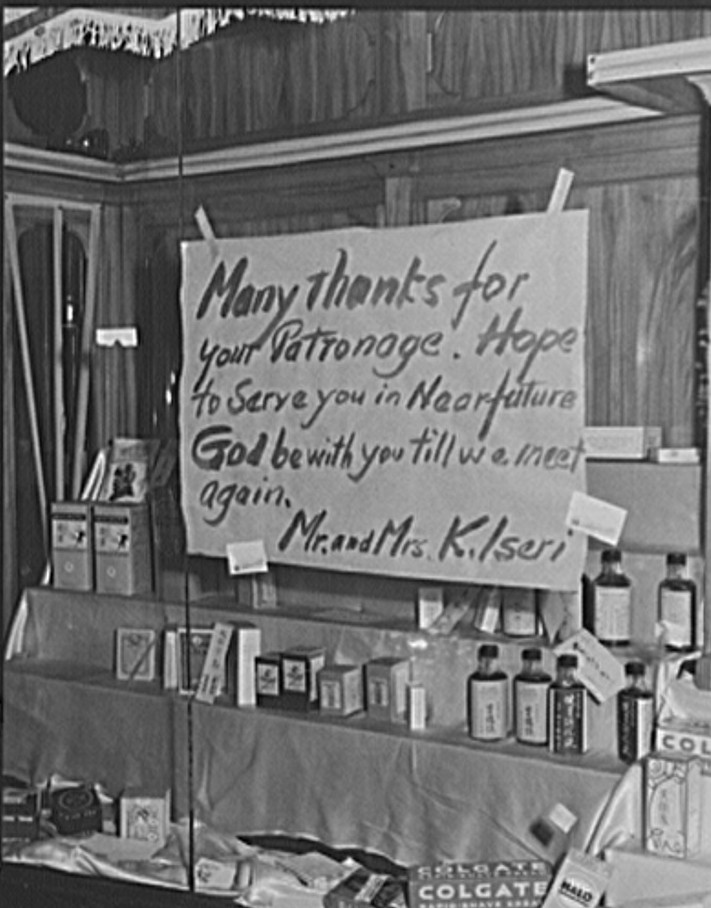
Japanese-Americans transferring from train to bus at Lone Pine, California, bound for war relocation authority center at Manzanar April 1942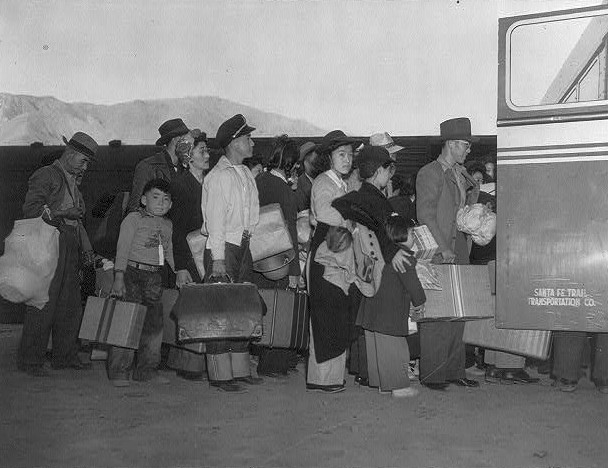
Baggage belonging to evacuees of Japanese ancestry at an assembly center in Salinas,Calif., prior to transfer to a War Relocation Authority center April 1942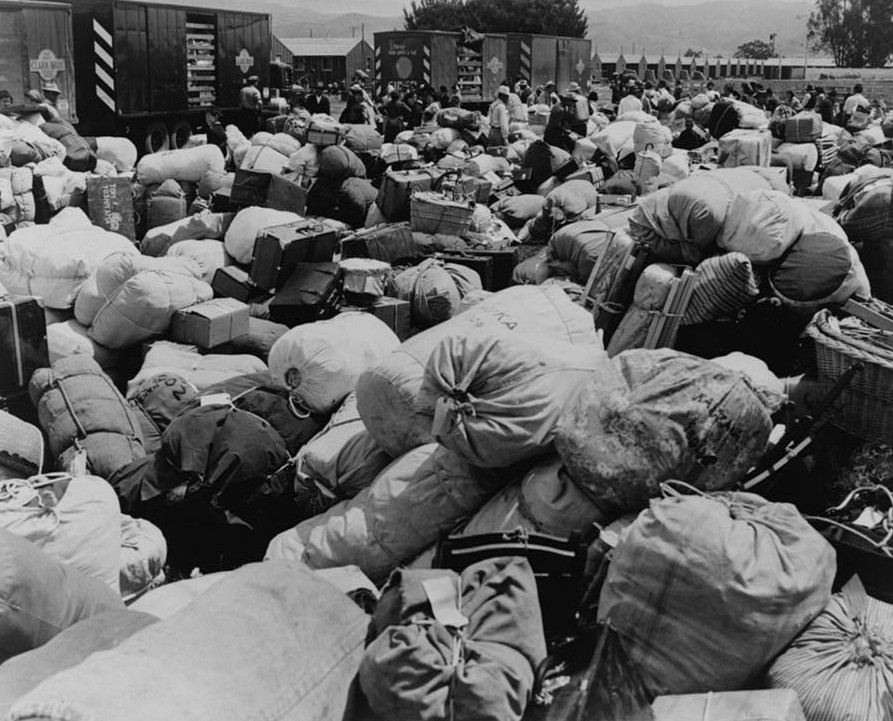
Salinas, California. Japanese-Americans getting information concerning evacuation orders photographer Russell Lee May 1942
San Benito County, California. Japanese-Americans, waiting for evacuation orders, clean their cemetery by Russell Lee May 1942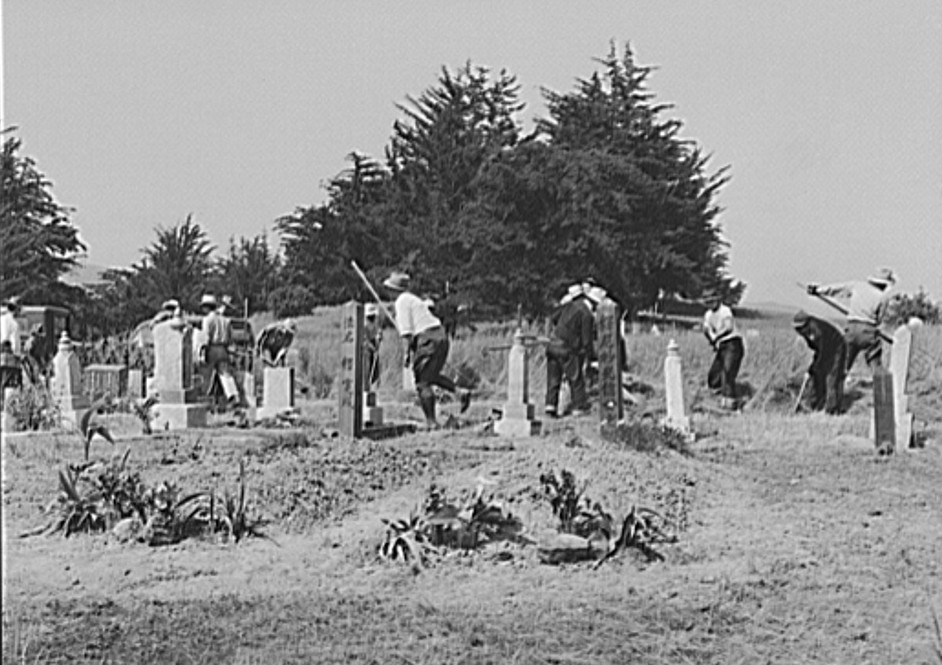
San Benito County, California. Spinach harvester operated by Japanese-Americans who await final evacuation orders by Russell Lee May 1942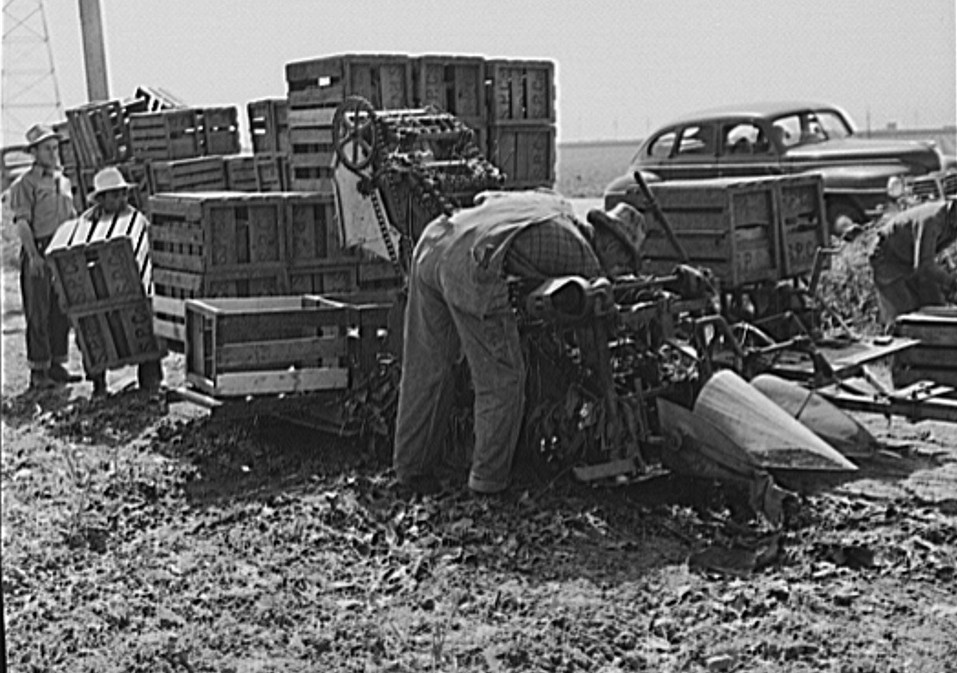
San Benito County, California. A Japanese-American waiting for final evacuation orders by Russell Lee May 1942
In 1944, the Supreme Court upheld the constitutionality of the exclusion orders.
- The Court limited its decision to the validity of the exclusion orders, adding, “The provisions of other orders requiring persons of Japanese ancestry to report to assembly centers and providing for the detention of such persons in assembly and relocation centers were separate, and their validity is not in issue in this proceeding.”
- The United States Census Bureau assisted the internment efforts by providing confidential neighborhood information on Japanese Americans. The Bureau denied its role for decades, but it was finally proven in 2007
Related stories:
Old film of Japanese Internment
Amazon.com – Read eBooks using the FREE Kindle Reading App on Most Devices
Try a trial Membership by clicking the link below. Join Amazon Prime – Watch Over 40,000 Movies & TV Shows Anytime – Start Free Trial Now
You can now give a gift of Amazon Prime = click this link to learn how – Shop Amazon – Give the Gift of Amazon Prime
As family historian, do you have friends and family ask you how to get started in family research? This is a hard question to answer in a few minutes. Refer them to the book below to help them get started in this fun hobby. Great Gift!

